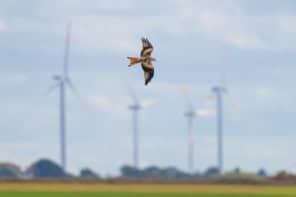
The 2017 red sun event in the UK provided striking images but photographers weren’t the only ones to benefit. Measurements have shown that the airborne particles that turned the sky a deep orange were highly negatively charged, adding more evidence to the idea of “dust electricity”.
Scientists at Reading University used sensors on balloons to find out more about the dust cloud moving overhead. Although the event was unexpected, the team had new instrumentation ready thanks to a recent project focusing on volcanic ash.
“We had to act quickly, but we managed to send one of our balloon probes into the dust plume above,” says Giles Harrison. “The measurements confirmed that there was charge in the plume, near turbulent regions of motion too.”
More details were obtained as winds carried particles above several well-instrumented sites on the ground.
“The surface measurements at Reading showed a particularly dramatic dip in the atmospheric electric field, which turned out to be very similar in measurements at Chilbolton and Bristol,” says Harrison.
Dust plumes strongly influence the local atmosphere by changing the energy balance of incoming and outgoing radiation. As observers witnessed, light scattered by the particles altered the appearance of the sky from blue to orange/red. Direct evidence of charged behaviour could provide new insight into these and other effects.
“Electric fields in the atmosphere have been suggested to encourage alignment of charged particles, rather than being randomly oriented, which changes how sunlight and radiation from the Earth are transferred,” says Harrison. “Some large dust particles have been observed much further from their source than can currently be explained, and it might be that charge reducing their fall speeds helps to explain this.”
The plume of Saharan dust and Iberian smoke responsible for the red sun event in the UK on 16th October 2017 was transported by the remnants of Hurricane Ophelia.
Scientists have been aware for more than 150 years that atmospheric dust can become electrically charged through frictional interactions between colliding particles – a process dubbed triboelectrification.
The researchers were keen to gather as much new information as they could. The balloon-borne sensors highlighted an unexpected dry region within the plume. It’s hoped that this unusual data, which also includes land-based laser measurements, will help to incorporate the electrical effects of dust clouds into analyses.
Harrison and colleagues reported their findings in Environmental Research Letters (ERL).



